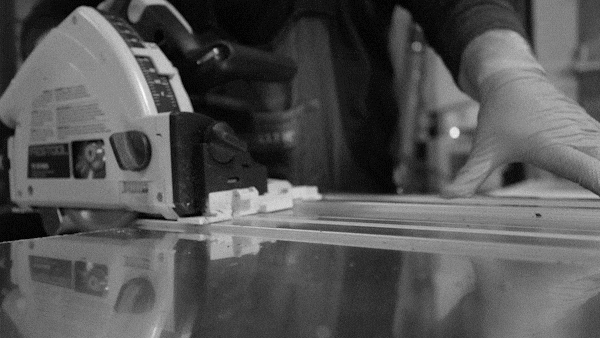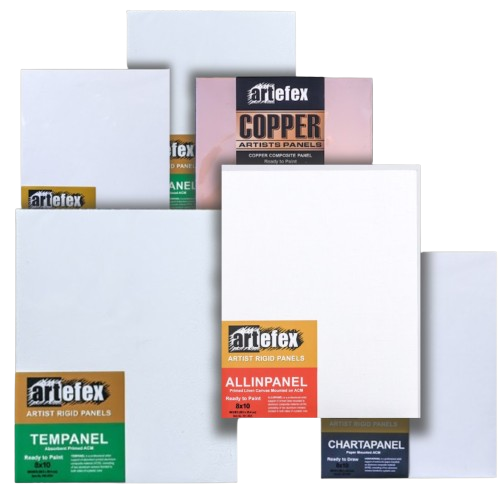Conservar Acrylic Varnish is a colorless, reversible varnish made with a methylacrylate (Paraloid B-44) resin dissolved in pure aromatic solvents with UV stabilizer. It can be used both as an isolating varnish and a final varnish. The varnish can be removed with suitable aromatic solvents.
Paraloid B-44 (formerly called Acryloid B-44 in the United States) is a thermoplastic acrylic resin, and the principal component of Incralac, provides an excellent varnish of hardness, adhesion and film toughness together with clarity and transparency. It is often blended with other resins to adjust the balance of properties required for a set purpose. Paraloid B-44 acrylic resin can be dissolved in toluene, xylene, selected esters, acetone, and methyl ethyl ketone. Paraloid B-44 is not soluble in most alcohols and aliphatic hydrocarbons as the sole solvent. It is well suited for a variety of applications, including treated metal, copper, zinc, brass, treated aluminum, concrete, and certain plastics. While some change of the resin occurs after it has aged, this change can be essentially eliminated by the addition of a UV stabilizer, which is included in Conservar Acrylic Varnish.
Paraloid B-44 is insoluble in almost all purely aliphatic solvents, such as odorless mineral spirits, making it an ideal isolating varnish. It can be used with other varnishes applied as a distinct layer, for example, below Conservar Finishing Varnish or other varnishes. Conservar Finishing Varnish remains easily removable without harming the Conservar Acrylic Varnish in the layer below. Conservar Acrylic Varnish can also be used as a final varnish that is less glossy than Conservar Finishing Varnish.
Compared to natural resin varnishes, such as dammar, Conservar Acrylic Varnish has a slightly satin-like appearance. It will not saturate colors as well as dammar or Conservar FInishing Varnish and is considerably less glossy.
Paraloid B-44 resin in Conservar Acrylic Varnish is a polymeric resin (high molecular weight) giving it a pleasant feel or ‘brushability’. When brushing it has enough viscosity to give a feeling of control while it easily spreads out evenly. Its major advantage is its relatively good leveling in a single application without the tendency to sink into matte areas of a painting.
Recommended Uses
Conservar Acrylic Varnish is recommended as both an isolating and a final varnish on the following paint films:
Conservar Acrylic Varnish is specifically formulated to be applied over copper or as a varnish on oil or alkyd paintings on copper panels. It has been specifically formulated as a clear coat to protect copper from oxidation, so it works well on paintings where copper is exposed and not covered by paint film. Conservar Acrylic Varnish is based on the public domain formula of INCRALAC, a clear coat developed specifically to provide corrosion protection for copper.
Coverage
A four fluid ounce (118 ml) can covers approximately 80 square feet (7.4 square meters).
Directions
Prior to actual use, it is very important to test Conservar varnishes on test pieces to understand how they perform and how they alter the surface appearance of your paintings. For best results, apply to a test piece that is similar in composition as the artwork to be varnished. This will help ensure that a successful varnish application will be achieved.
When to Varnish
The best practice is to wait 6 to 12 months before varnishing with Conservar Acrylic Varnish. Oil and alkyd paint films need time (typically months) to polymerize and form a resilient film otherwise a coating added on top of an improperly cured film may cause the layers beneath to swell and loosen.
It may be possible to apply Conservar Acrylic Varnish when the thickest areas of your painting are “dry through”—not touch dry. To determine if your painting is “dry-through”, press into the thickest area of your painting with your thumb at the same time twisting it a full 90° on the paint film. If your painting is on a flexible support, such as stretched canvas, be certain to provide support to the opposite side. The paint is considered dry-through when there is no loosening, detachment, wrinkling, or other of distortion visible on the paint surface. This procedure is fully described in the ASTM Standard D1640: Standard Test Methods for Drying, Curing, or Film Formation of Organic Coatings at Room Temperature.
Please note, however, that the more the oil/alkyd paint is allowed to polymerize or cure the more likely the varnish application will be successful. Always test the application of varnish on test pieces first to determine the suitability of the varnish for your application.
Preparation for Varnishing
Acclimate your painting and varnish materials and tools to the same environment. At least several hours prior to varnishing, place all items, such as your painting, brushes, containers, and Conservar varnish, in the same room. Varnish in a dust-free environment with the least amount of air movement to avoid raising dust.
It is best to brush or spray apply Conservar varnishes. Other methods, such as applying with paint pads, sponging or rolling, are not recommended, as they may result in foaming, loss of film clarity, non-uniform coverage, excessive film build, sagging, or deposit of materials from the application tool.
Brush Application
Apply with a wide flat, soft-hair brush. Conservar Acrylic Varnish can be thinned up to 20% with high flash mineral spirits containing at least 20% aromatics. DO NOT MIX WITH WATER. Apply only one coat as a final varnish when applying by brush. Allow to dry three days and wipe varnished surface with a soft, lint-free cloth.
Spray Application
The best way to achieve an even coating of varnish is to apply by spraying. This is particularly true for impasto surfaces. Spraying is also a useful technique for creating a matte surface. The size of the surface to be sprayed will determine the best type of spray equipment to use. Conservar varnishes can be sprayed from an airbrush, airless or air-pressure spray equipment, or refillable aerosol spray can.
To prepare for spraying, make sure all equipment is free of dirt. Work in an area free of dust and dirt and keep work off the ground when spraying. Spray two to four light even coats instead of one or two thicker applications, allowing enough time for drying between coats (1 to 4 hours or until the surface is tack free).
Release the spray trigger when stopping the motion of the sprayer during application in order to avoid a buildup of varnish in one spot. Maintain a uniform distance from the surface, and avoid spraying in an arcing motion. Make straight passes across the work, changing direction once the spray has cleared the edge of the piece being varnished. Slightly overlap the spray pattern with each pass, until the entire passage has been covered.
To achieve a more uniform spray application, turn the painting 90 degrees and apply the subsequent coat perpendicular to the previous one. A typical spray application lays down a film only 1/8 to 1/4 the thickness of a brush coat application. If maximum protection is required of the varnish layer, apply multiple coats.
Drying Time
When applying multiple coats (spray application only), allow 1 to 4 hours in between coats. Inspect the surface for tackiness, which may mean that the coat is not sufficiently dry. Let the varnish cure several days before packing or transporting the painting. During transportation and storage, avoid contacting the surface with packing materials, including glassine, bubble wrap or any other plastic. NEVER STACK PAINTINGS, whether varnished or not.
Care and Storage
As Conservar varnishes are removable, it is important that they not be painted over. Paint applied over the varnish would also be potentially removable, and would pose a difficult problem in conservation or restoration attempts.
Techniques for Reducing Gloss
There are a number of different ways to reduce the gloss of Conservar varnish:
- Dilute the varnish with additional solvent before using.
- Apply a thin coating. The thinner the coating, the lower the gloss.
- Brush the varnish as it dries. When the varnish is starting to set up, if you continue to brush it then you will microscopically roughen the surface and it will be less glossy.
- Spray apply the varnish.
If the varnished surface of your painting appears too glossy, you can apply a final coating of Conservar Wax. Rub on a thin layer of wax with a soft, lint-free cloth using small circular strokes. Allow the wax to dry overnight for the highest degree of matte. To create a satin finish, allow the wax to dry for about 4 to 6 hours, and then gently buff.
Cleanup
Clean all equipment immediately following application. Clean brushes with the recommended mineral spirits (not odorless mineral spirits), such as Stoddard solvent or a high flash mineral spirits solvent. To ensure desired results, always make a test piece for your particular application and surface.
Removal
Use a clean, soft, lint-free rag dampened with naphtha solvent or mineral spirits (Stoddard solvent). Gently rub the varnished surface and repeat process until all varnish is removed. Do not use stronger solvents. Allow to dry and reapply Conservar varnish.
Paraloid B-44 is a registered trademark of Dow Chemical Corporation. Conservar is a trademark of Natural Pigments. Rublev Colours is a registered trademark of Natural Pigments.
 515 Lead Alkyd-Primed Extra Fine Cotton-Polyester
$10.00 – $226.00Price range: $10.00 through $226.00
515 Lead Alkyd-Primed Extra Fine Cotton-Polyester
$10.00 – $226.00Price range: $10.00 through $226.00
 Allinpanel™ Lead Primed Linen
Rated 5.00 out of 5$14.00 – $315.00Price range: $14.00 through $315.00
Allinpanel™ Lead Primed Linen
Rated 5.00 out of 5$14.00 – $315.00Price range: $14.00 through $315.00 Artefex Copper Artist Panel
Rated 4.8 out of 5$18.00 – $418.00Price range: $18.00 through $418.00
Artefex Copper Artist Panel
Rated 4.8 out of 5$18.00 – $418.00Price range: $18.00 through $418.00 Arthur Gain Art Panels
Arthur Gain Art Panels
 Christopher Remmers Workshop Panels
$150.00 – $275.00Price range: $150.00 through $275.00
Christopher Remmers Workshop Panels
$150.00 – $275.00Price range: $150.00 through $275.00
 Tony Ryder Class Panels
$25.00 – $192.00Price range: $25.00 through $192.00
Tony Ryder Class Panels
$25.00 – $192.00Price range: $25.00 through $192.00
 530 Medium - Allinpanel Primed Acrylic Art Panels | 16x20" | 3mm | Panel of the Week
530 Medium - Allinpanel Primed Acrylic Art Panels | 16x20" | 3mm | Panel of the Week
 411 - Oil-Primed Art Panel – Oleopanel (Lead Oil) | 16x20 | 3mm | Panel of The Week
$59.50 – $178.50Price range: $59.50 through $178.50
411 - Oil-Primed Art Panel – Oleopanel (Lead Oil) | 16x20 | 3mm | Panel of The Week
$59.50 – $178.50Price range: $59.50 through $178.50
 533 - Allinpanel Lead Primed Linen | 18x24" | 3mm | Panel of the Week
$112.00 – $336.00Price range: $112.00 through $336.00
533 - Allinpanel Lead Primed Linen | 18x24" | 3mm | Panel of the Week
$112.00 – $336.00Price range: $112.00 through $336.00































Reviews
Clear filtersThere are no reviews yet.